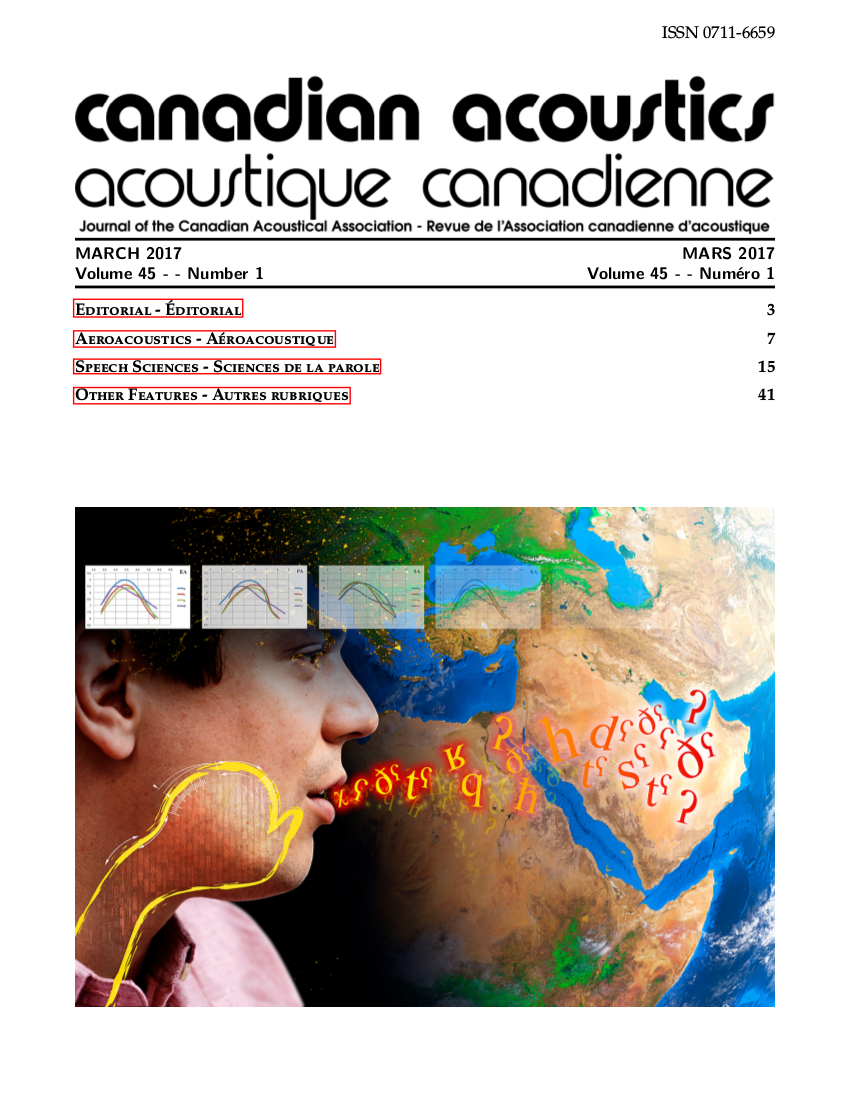Using Optical Flow Analysis on Ultrasound of the Tongue to Examine Phonological Relationships
Keywords:
ultrasons, échographie, flux optique, opposition, allophony, voyelles, ultrasound, optical flow, contrast, vowelsAbstract
This paper examines whether there are articulatory correlates of differing degrees of phonological contrast. English tense vowels are found to be produced with greater average magnitudes of movement when they occur in closed syllables, where they are generally contrastive with their lax vowel counterparts, than when they occur in open syllables, where they are less contrastive. Magnitude of tongue movement was determined by optical flow analysis of ultrasound videos of tongue movements; optical flow analysis allows for direct comparison of results across speakers and for the extraction of data from the entire timecourse of productions.Additional Files
Published
How to Cite
Issue
Section
License
Author Licensing Addendum
This Licensing Addendum ("Addendum") is entered into between the undersigned Author(s) and Canadian Acoustics journal published by the Canadian Acoustical Association (hereinafter referred to as the "Publisher"). The Author(s) and the Publisher agree as follows:
-
Retained Rights: The Author(s) retain(s) the following rights:
- The right to reproduce, distribute, and publicly display the Work on the Author's personal website or the website of the Author's institution.
- The right to use the Work in the Author's teaching activities and presentations.
- The right to include the Work in a compilation for the Author's personal use, not for sale.
-
Grant of License: The Author(s) grant(s) to the Publisher a worldwide exclusive license to publish, reproduce, distribute, and display the Work in Canadian Acoustics and any other formats and media deemed appropriate by the Publisher.
-
Attribution: The Publisher agrees to include proper attribution to the Author(s) in all publications and reproductions of the Work.
-
No Conflict: This Addendum is intended to be in harmony with, and not in conflict with, the terms and conditions of the original agreement entered into between the Author(s) and the Publisher.
-
Copyright Clause: Copyright on articles is held by the Author(s). The corresponding Author has the right to grant on behalf of all Authors and does grant on behalf of all Authors, a worldwide exclusive license to the Publisher and its licensees in perpetuity, in all forms, formats, and media (whether known now or created in the future), including but not limited to the rights to publish, reproduce, distribute, display, store, translate, create adaptations, reprints, include within collections, and create summaries, extracts, and/or abstracts of the Contribution.


